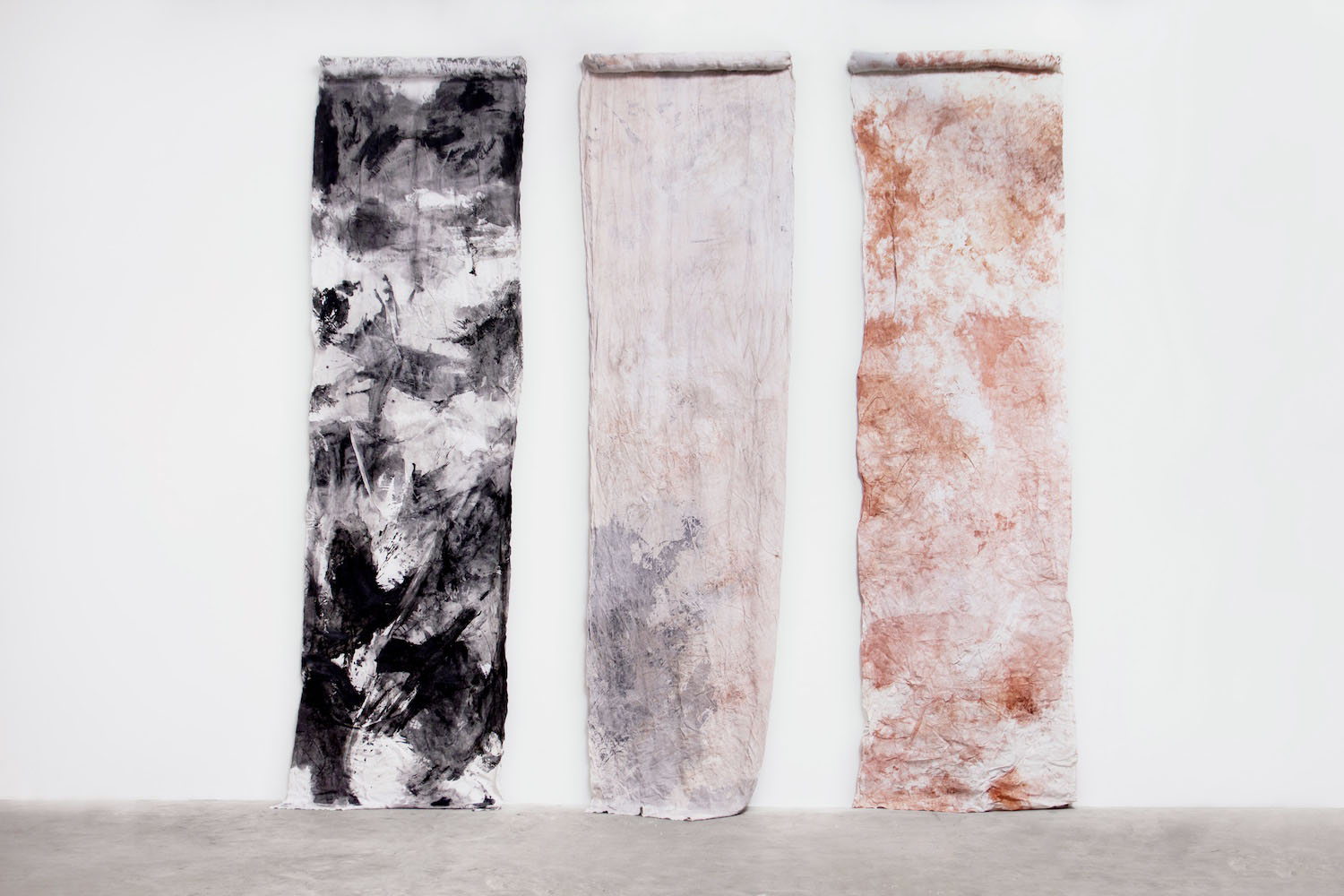Yohannah de Oliveira
Santuários Movediços
May 18, 2023
– June 17, 2023
Usina Luis Maluf
Brigadeiro Galvão, 996
Moving Sanctuaries
Safe place is a notion that refers to a place of shelter, both physical and emotional, for an individual or a group of people. Refuge, redoubt, nest, and sanctuary are some metaphorical examples of safe places.
Yohannah de Oliveira found in the process of artistic creation her temple. It is where a condition of invention and safeguarding is established. Without discovery it is not possible to continue taking refuge, just as a hiding place needs to change place or a password needs to be updated to keep something safe. After all, to save is to make it last, to face the action of time.
From a Christian congregational family, Yohannah preserves an iconoclastic verve in her investigations. She registers non-figurative pulsations, even though she sometimes lends them a title that guides a meaning. Her gestural procedures are marked by the trace and the capture of impressions left by materials that are in contact with the work as it works, that is, while wefts react to pigments, water and other substances, until their drying process.
Concealing and revealing
Yohannah seems driven by oxymorons, and one of them consists of concealing by revealing, that is, covering up, but demarcating that something is hidden right there. In Dar as costas, the artist envelops and sews the surface that was painted, turning it inside out. The painting becomes subcutaneous: we can only access the pigment that has leaked onto the back of the canvas. This experience is similar to that of someone who discovers a safe or a folder with a password on the computer and announces: “I am here, and my value can only be accessed through a secret”. But the secret here is that the external protects and at the same time carries with it the value of what has been hidden. In turn, the complementary opposing work, Bater de Frente, reveals the painting to the world, and when discussing what is the primary aim of something, the opposition of the works prioritizes interiority.
Other works also deal with this economy of revelation: that is, they take place in a regime of that which lets itself be seen. Mosqueteiro delineates an inside and an outside by means of a tenuous matter, the tulle that filters an inadvertent look. Inside, a candle, the same height as the artist, carries with it the idea of slowly revealing.
Such procedures convoke discussions of photography, since excessive exposure devastates the image and captures nothing; and of the order of the sacred itself, whose presence we may even feel, but it is not our place to see, at least not completely.
Premeditated archaeologies
Imbued with safeguarding something, Yohannah flirts with the action of time, but armed with subterfuges to delay its passage. In O que eu deixo vazar, the earthy and mineral palette establishes the perception of something remote, telluric, or archetypal, but at the same time its texture is full of durable components such as glue, acrylics, and polymers. There is no opposition between natural and artifice, everything is ingenuity.
Rizoma, Mar Concreto, Toque, Fêmur start from a kind of archeological site previously built. The action of wearing out the pieces, from their composition in premeditated layers, brings a data of control over what can be found, but does not prevent the discovery, the surprise, and the nuance with the effect of accumulation of time.
Framing the gaze
And even in works that are contrary to the logic of concealment, Yohannah uses artifices such as framing raw materials that are not always consecrated, to speak of what is sacred around us. A frame refers to the “picture” format, but also to the more mundane that deserves to be appreciated on cell phone screens. And just as what is inside the frame is image, what fits in a frame is art.
It is in this enigma of making hidden matter its raw material, of making something visible in its concealment, of something that endures safe from time and gaze, that Yohannah builds her shifting sanctuaries of invention.
Diego Mauro, curator

